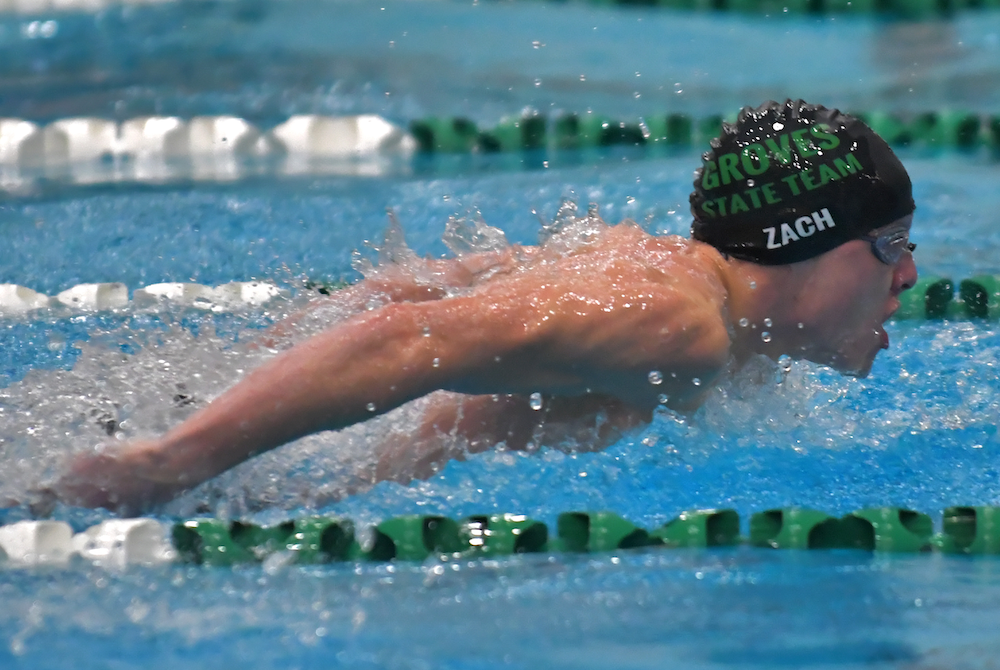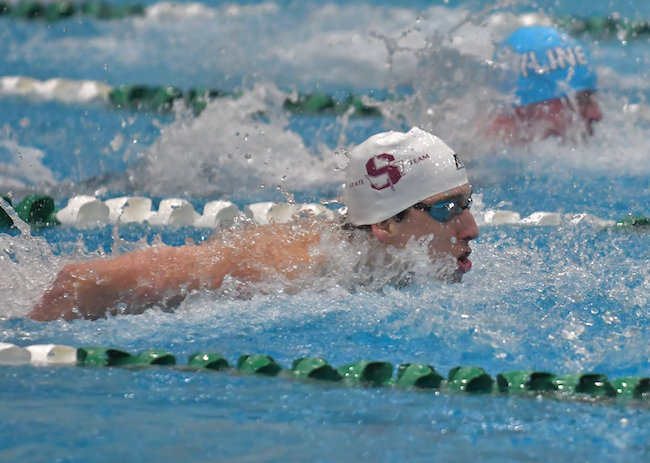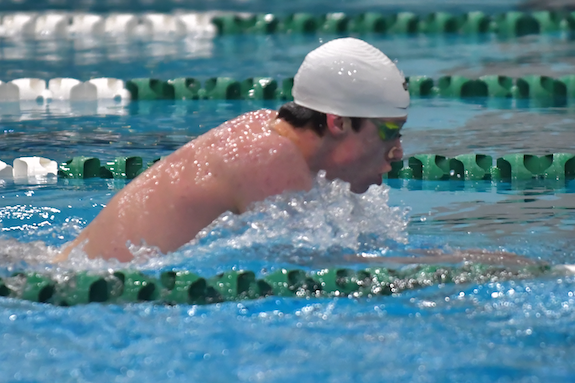
Be the Referee: Swim Finishing Touch
September 19, 2019
This week, MHSAA officials coordinator Sam Davis explains a new rule in swimming that allows for more flexibility when determining when a competitor has finished a race.
Be The Referee is a series of short messages designed to help educate people on the rules of different sports, to help them better understand the art of officiating, and to recruit officials.
Below is this week's segment - Swimming Finishing Touch - Listen
There’s a swimmer-friendly rules change being made in that sport this season. The definition of a legal finish has been changed to allow a competitor to touch any part of the finish end of the lane.
Previously, a swimmer had to contact the touch pad for a legal finish. The touch rule has also been changed to apply during relay races – where prior to this season only the final swimmer had to touch the finish end of the pool.
While the changes may provide some flexibility for swimmers, it does put additional responsibility on lane judges and back-up hand timers to be ready for those occurrences when a swimmer does not contact the touch pad.
Sept. 12: Curbing Gamesmanship By Substitution - Listen
Sept. 5: Football Safety Rules Changes - Listen
Aug. 29: 40-Second Play Clock - Listen

Groves Rallies from 1st-Event DQ to Win Final Race, Repeat Finals Title
By
Tim Robinson
Special for MHSAA.com
March 9, 2024
YPSILANTI — Repeating as a Finals champion is never easy.
But the Birmingham Groves boys swim & dive team took it to a new level Saturday.
The Falcons, who won the Lower Peninsula Division 2 title by seven points last year, endured a disqualification in the 200 medley relay this time but battled back to win by a point after finishing first in the final event of the day, the 400-yard freestyle relay.
“I think it might have been the most up-and-down day of my life,” Groves first-year coach Nick Valise said. “I’ve never been in this position before. I still don’t believe it.”
Groves trailed until the final event but finished with 245 points, one point better than Seaholm and Farmington, which tied for second.
Groves did get a key break when crosstown rival Birmingham Seaholm also had a DQ, in the 200 free relay. But the key to the Falcons’ comeback was its resilience.
 Joey Stebbins, one of the team’s senior leaders, set the tone after being responsible for the false start that led to the disqualification.
Joey Stebbins, one of the team’s senior leaders, set the tone after being responsible for the false start that led to the disqualification.
‘Honestly, I just had to shake it off,’ he said. “I knew I messed up as soon as I got in (the pool). I knew I DQ'd it. I'm like, I'd own up to it (and) shake it off.”
“I must say, I’ve never met a group of boys who handled something like that so well,” Valise noted. “I mean, right after the DQ, heads picked right up, (they) put their foot down, kept fighting. Gave us a chance at the end of the meet.”
Groves, Farmington and Seaholm were ranked in that order at the top of LPD3 entering the meet.
Seaholm won four events, including the 200 medley relay. Sophomore Elliot Rijnovean, who was on that relay, also won the butterfly and backstroke, while freshman Quinn O’Neill won the 500 freestyle.
Senior Gus MacDonald won the breaststroke and individual medley for Groves and swam on the winning 400 free relay.
“I knew it'd be close,’ he said. “I knew we had to win that final relay to win the meet. I didn't know the logistics of it. But finally hearing that we won was the best feeling in the world.”
 Saturday’s meet was a standout chapter in the long crosstown rivalry.
Saturday’s meet was a standout chapter in the long crosstown rivalry.
“I go to class there once a day,” Stebbins said. “It's really, really good to go against them. It always pushes you up. It’s a friendly rivalry. Love those guys down the road.”
It was certainly a day to remember.
“A little surreal, actually,” Valise said. “But I got gifted a group of an amazing 25 boys that could not have worked harder and been more focused on the goal.”
Also winning championships Saturday were Grand Rapids Northview senior Caleb Howe in the 200 and 100 freestyles, Grosse Pointe South senior Troy Liu in the 50 free and Jenison senior Robby Russo in diving. Farmington won the 200 freestyle relay.
PHOTOS (Top) Birmingham Groves senior Zach Lezovich races for the eventual team champion; he scored points in three events Saturday. (Middle) Seaholm’s Elliot Rijnovean, bottom, holds off Ann Arbor Skyline’s Lucas Caswell to win the butterfly. (Below) Groves’ Gus MacDonald swims to the victory in the individual medley. (Click for more from High School Sports Scene.)

